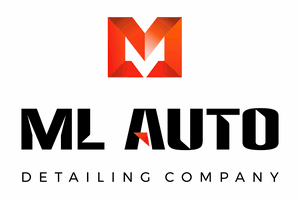Artistic Ironing
HAIL REPAIRS
Why should I?
FIND MORE
Up to 3 times cheaper than traditional repair methods such as painting or part replacement
SEE
Your car's interior stays clean because there's no dust, water, chemicals, or accidental painting of windows, tyres, underride bars or other areas of the car during the repair.
HELP
In some circumstances, you don't even need to go to a garage - we can come to you ourselves.
GO
The average duration of repairs without painting is less than 1 day
NO REDUCTION IN VALUE
The car's paintwork remains original and undamaged.
ORIGINAL PROTECTION
The anticorrosive layer is intact.
FREQUENTLY ASKED QUESTIONS
Paintless Dent Repair (PDR) is the removal of dents and dings in the body of a car without the need for puttying, priming, sanding or painting. This way, your car's paintwork remains original, saving you time and money.
The cost of repairs depends on the size and location of the dents on the car body. We can only tell you the exact price after we have inspected the car, but it's usually less than the cost of filling and repainting a part. The price is based on the number of dents and dings on one part, each successive dent on one part costs less.
Car repairs after a hailstorm usually take about two days. We'll give you an exact timeframe once we've inspected the dents.
There are currently three methods for markerless hail repair:
- Inside-out method: special tools are used to straighten dents. These tools are used to gently "massage" the car's sheet metal and pull it away from the wrong side.
- External method: special hot melt adhesives are used which do not damage the painted surface. Special holders are glued to the surface and pulled out with a back hammer. The resulting excess is hammered off using special tools.
- Electromagnetic method: this is a more ancillary method of shrinking the thinned metal, with devices working externally and internally.
This work requires great care, attention and good skills. There are various approaches to denting: dents on car doors can be accessed through the opening in the lowered door glass or other factory frame openings; dents on a car wing can be accessed through the gap in the fender or by removing the car's headlight; dents on the roof of a car can be accessed by removing the roof trim. In some cases, the door (or other part) trim must be removed.
Dents are straightened on both steel and aluminium surfaces. Dents on aluminium surfaces are much more difficult to repair and the cost of the repair is therefore higher.
No heating or cooling is used during the straightening process, so there is no risk to the original paint finish. Many customers ask do we use heating - cooling, magnets or vacuum to straighten dents? If you ask - we will most likely answer YES. For time saving reasons it is easier to accept the customer's knowledge. Heating can be used for defrosting in winter and also with hot glue. The only place the vacuum is used is to attach the lamp to the bodywork. Magnet... Think logically about how big a magnet is needed to pull out a dent. We can suggest you watch a funny video about a magnet. So none of the above are related to straightening dents - that way the dents don't undo themselves.
It is usually (but not always) impossible to perfectly repair dents such as:
- Sharp and too deep dents when the tin is overstretched;
- Older vehicles (20 years and older), as the paint and varnish on the car are no longer flexible and do not allow for quality repairs;
- Dents in areas of the car's bodywork that are reinforced with double sheeting, such as the corners of the doors and the edges of the front and boot lids;
- Dents closer than 1cm to the edge of the car part;
Other areas where the paint is damaged (cracked or chipped).
If the car is covered by voluntary CASCO insurance, insurance companies reimburse the cost of repairs, and if the no-fault method is chosen, they usually don't apply a deductible (freezing)


